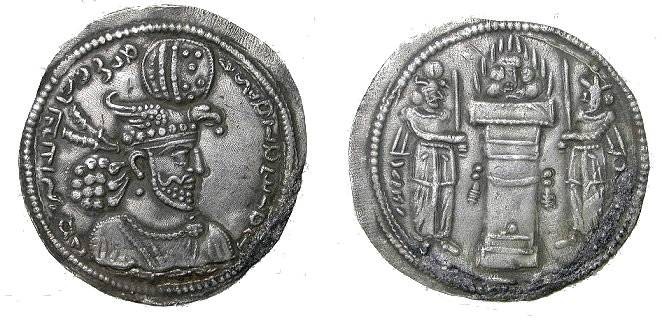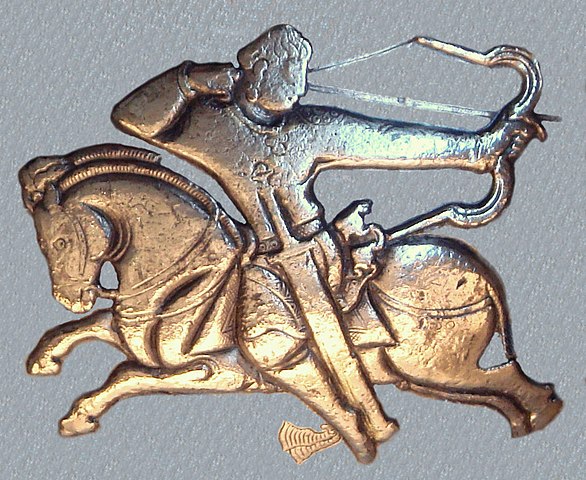------------------
Part 14: Back from Hell
When Claudius was acclaimed emperor and protector of Gaul, Hispania and Britannia after Postumus' death in 285, it was clear that the empire he inherited from his father was vastly different from the one that was created in 259. Though its administrative structure was largely unchanged, which could create potential problems later, almost all of the domestic and foreign threats that surrounded the state since its birth had been crushed: the Alemanni and theit king, Chrocus, who sacked Rome three decades ago, were annihilated; the Franks were defeated and were in the process of assimilation; the massive Gothic army that threatened to take Burdigala and split the empire in two were driven back to their "kingdom" in the east, where they would soon be swept away by the armies of Wahballat the Great; last but not least, all of the military usurpers that rose up in revolt were defeated, ensuring that the realm remained stable.
Postumus became known as the man who held back what seemed to be an unstoppable tide. Claudius, young and ambitious, would never settle for that.
Now that the "Gallic" Empire's position was secure, the new emperor wanted to reverse this trend to his favor, and this could mean only one thing: foreign conquests, preferably with him leading them. It was with this in mind that, soon after his accession, he ordered the construction of a massive fleet that may have had as many as 500 ships, most of them troop transports and supply vessels rather than warships, with the objective of retaking the various islands of the western Mediterranean, especially Sicily, and, of course, the biggest target available, the once Roman provinces of North Africa. This was no easy task, for the empire had no naval experience whatsoever (something that made finding extra crews a really difficult job) and the gigantic amounts of money that had to be raised for such an operation led to considerable tax increases that raised several eyebrows not only among the nobles and senators of Augusta Treverorum, but also among the general populace.
Claudius certainly knew that, if this project ended in failure, he would never be forgiven. Nevertheless, the fleet was completed in 289, after four years of hard work and the spending of countless hard earned aurei (the standard Roman gold coin of the time), and he soon after began to discuss the possibility of invading Africa with his top generals, most of them hardened veterans who earned their stripes Postumus' reign and had few reasons to respect their young new leader. Thus, it would take a couple of years for this invasion to materialize, a period during which dark clouds threatened to gather around the court, with a growing number of notables of several classes believing that their emperor was a megalomaniac. They had a good reason to believe that, since it would have been much easier (at least on paper) to reconquer Italy and use the devastated peninsula as a stepping stone to seize control of the western Mediterranean.
A rough map of the provinces of Roman North Africa.
On the southern end of the pond, it is extremely difficult to know what exactly was going on in the region that was to be invaded after the Sack of Rome, and nearly all available sources of the time are multiple coins. From these sparse records, it is known that a certain Galerius Maximus was governor of Africa Proconsularis between 258 and 259, and monetary evidence shows that he became an autonomous ruler, with his capital likely being Carthage, for a few years afterwards, although it is unknown if he proclaimed himself an emperor or if he died peacefully or was assassinated. Considering that coins with his face were unearthed not only in the provinces that he originally ruled, but also in Sardinia, Corsica, the Baleares and Sicily, it is a reasonable guess that he was a powerful ruler (1). In the years between 266 (when Galerius' face and name disappear from coinage) and the invasion, the region may have had as many as fourteen different leaders or usurpers all over the place, an obvious proof of political instability, and raids from Berber tribes were likely also a problem.
The much anticipated invasion finally happened in 291, when a Gallo-Roman force of around 40.000 men stationed in Gadir and led by Claudius himself crossed the Pillars of Hercules (2) and landed outside Tingis, which fell without any resistance. Over the next two or three months the conquering army slowly marched along the coast, followed closely by the fleet that kept it well supplied at all times, and all of the cities along its path, including the larger ones such as Hippo Regius, threw their gates open and surrendered, a demonstration that the Afro-Romans either desired return to a semblance of stable government or were so afraid of a Berber takeover that pledging their allegiance to the invaders was seen as a better option for them. Anyway, the only place that showed a semblance of resistance to Claudius and his soldiers was Carthage itself, which too surrendered after its general, a certain Constantine (who is never heard of again) saw that his situation was hopeless.
The ruins of ancient Leptis Magna, once one of the most important cities of North Africa.
Although there were no major battles, the reconquest of North Africa was a magnificent victory that greatly increased Claudius' prestige back home, with many who were once skeptical of him now respecting the man's audacity. Not only that, but, after a few years of organizing everything (an administration, tax collection and all that) the vast region proved itself to be a large net gain to the imperial treasury, since, despite the years of instability and the Berber raids, it had not experienced nothing anywhere near as bad as the devastation that places like Italy and the Haemus suffered during the Crisis of the Third Century, and most of its infrastructure was still broadly intact. It was also a large producer of grain, and with the Mediterranean islands subjugated shortly after, trade quickly began to pick up not only with Gaul and Hispania, but also with the Palmyrene Empire to the east and, through it, India and China.
After returning to Treverorum a hero, the young emperor soon began to plan for what would be the most important military campaign of his career: the reconquest of Italy, once the center of Roman civilization. Ever since the sacking of the Eternal City decades ago, the peninsula had fallen into a period of complete chaos, with local cities and towns being forced to fend for themselves as a growing number of barbarians followed the footsteps of the Alemanni, raiding and sometimes settling all but the most fortified and defensible settlements, like Ravenna (surrounded by marshes and swamps) being spared from the wrath of the invaders. Even these few urban areas suffered from famine and disease, as the Gallo-Romans would later find out.
The reconquest of Italy began in 298, when a force of 40.000 soldiers crossed the Alps and advanced into the once fertile Po valley. It was there that the only battle of the campaign took place, on the outskirts of Mediolanum, where they encountered a large number of Juthungi (many of them soldiers but mostly civilians) who were retreating back to their homeland somewhere in Germania. Surprised by the Gallo-Romans, who were led by emperor Claudius and a general named Tetricus (3), they suffered a resounding defeat and were forced to surrender a good part of their riches before they were allowed to cross the Alps. After this confrontation, the rest of the campaign was very straightforward, with most cities in Italy (what was left of it) surrendering to the imperial troops, Dalmatia and Illyricum following shortly after.
Though it was easy enough getting there, it was not a glorious affair, far from it, and governing it would prove itself to be a Herculean effort. Three decades of war, countless raids by several barbarian peoples, combined with widespread social collapse, plagues of all sorts and famine, reduced what was once the center of the Mediterranean and one of the wealthiest regions in the planet into a depopulated, barren wasteland. A certain account says that Claudius broke down crying when he saw the ruined remains of Rome, which by then likely had less than thirty thousand people living in it, with large portions of it being slowly reclaimed by nature as buildings, roads, sewers among other things crumbled apart due to lack of maintenance.
After seeing the ruins, the emperor supposedly swore an oath that he would never again embark on a foreign adventure, and that he would use all of his energy to rebuild Italy and its once vibrant cities and farmlands. While many question the authenticity of the "Italian Oath" altogether (it does sound suspiciously similar to the tale of the Indian emperor Ashoka Maurya, who converted to Buddhism and became a pacifist after his brutal war against the kingdom of Kalinga), everyone agrees that it would take this resurrected Roman Empire several decades before its armies fought in foreign lands again.
Shortly before his death in 324, the Roman Senate awarded Claudius the title of "Restitutor Orbis", or Restorer of Rome (4). He had immortalized himself as the man who, through his ambition and audacity, had, by all means, restored the Roman Empire. It would take centuries before said empire could compare itself to the one that was ruled by men such as Augustus, Trajan and Marcus Aurelius.
Those glorious days would come. They had been earned.
Summary:
285 - Postumus, Emperor and Protector of Gaul, Hispania and Britannia, dies. Claudius, his son, succeeds him. Soon he orders the construction of a large fleet for him to invade Africa with.
289 - After years of hard work and great cost, the fleet is completed.
291 - Africa is reconquered.
298 to 300 - Italy and Dalmatia (what's left of them, anyway) are reconquered.
324 - Claudius II, now known as the Restorer of the World, dies after suddenly collapsing in his bedroom. Judging by contemporary accounts, it seems that he suffered a stroke.
------------------
Notes:
(1) All that I found about this Galerius Maximus fellow on the internet is that he was the governor of Africa Proconsularis from 258 to 259. And that's it.
(2) The Strait of Gibraltar.
(3) IOTL's Tetricus II.
(4) That title, IOTL, was given to emperor Aurelian, who reunified the Roman Empire and effectively ended the Crisis of the Third Century.




